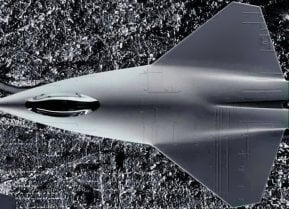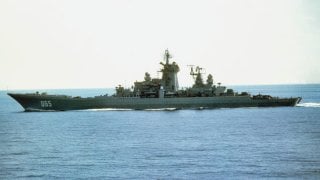Kirov-Class: Russia Built These Battlecruisers to Sink Navy Aircraft Carriers
The Kirov-class battlecruisers were developed during the Cold War to counter U.S. naval dominance, particularly the threat posed by aircraft carrier strike groups like the USS Enterprise.
Summary and Key Points: The Kirov-class battlecruisers were developed during the Cold War to counter U.S. naval dominance, particularly the threat posed by aircraft carrier strike groups like the USS Enterprise.
-Derived from the Project 1164 Atlant missile cruisers, these ships were designed for power projection and blue-water operations.
-Equipped with a range of weapons, including SS-N-14 anti-submarine and P-700 Granit anti-ship missiles, the Kirov-class posed a significant threat to U.S. aircraft carriers. The ships also featured robust defenses, combining nuclear and steam turbine propulsion for extended range.
-However, despite their impressive design, the Kirov-class has not lived up to expectations.
Kirov-Class Ships: Why Soviet Naval Innovation Couldn't Stand the Test of Time
During the Cold War arms race, the USSR envisioned a warship that could counter U.S. naval dominance. The USS Enterprise and USS Los Angeles especially worried the Soviets in the 1960s and 1970s, and Moscow needed to find a way to counter America’s carrier strike groups.
The resulting Kirov-class battlecruisers fulfilled this requirement. With its array of weapons, defenses and sensors, the Soviets’ new class of warships arguably represented the pinnacle of the nation’s naval innovation once introduced.
A Brief History of the Kirov-Class Ships
The Soviets developed Kirov-class warships to project power, sail in blue-water operations, survive enemy attacks, and carry a versatile set of weapons and sensors.
The design of the new ship class was derived from the preceding Project 1164 Atlant missile cruisers.
In order to face down the U.S. Navy’s carrier strike groups and its modern submarines, the Kirov ships were designed to carry a large payload of SS-N-14 anti-submarine missiles (and later, P-700 Granit anti-ship missiles). While the Soviets had high hopes for the Kirov-class vessels, the ships have perhaps not lived up to expectations. Initially, four Kirov battlecruisers were constructed. Out of the two that remain in service, one has been relegated to drydock for more than a couple decades.
The Kirov-class vessels are equipped with 96 S-300F, 40 4K33, and 192 3K95 short-range surface-to-air missiles, in addition to six Ak-630 close-in weapon systems for defense. Additionally, these battlecruisers were fitted with a range of fire control radar, air/surface search radar, and hull-mounted sonar.
As detailed by one defense expert, “The propulsion system was a combination of nuclear power and steam turbine, with two nuclear reactors coupled to two oil-fitted boilers, which superheated the steam produced in the reactor plant to increase the power output available during high-speed running, while it also provided an essentially unlimited range.”
Equipped with its long-range Granit missiles, the Kirov class did pose a serious threat to American aircraft carriers.
In addition to being able to inflict damage on the U.S.’s primary source of intervention and power projection, the Soviet-built ships could escort the nation’s ballistic-missile submarines in a protective role.
While on paper the Kirov-class should have remained a critical component of Russia’s naval fleet, these ships have proven to be expensive to maintain, highly complex, and overall outdated in the modern threat environment.
The arduous journey of the Admiral Nakhimov battlecruiser perhaps best symbolizes the future of the remaining Kirov ships.
Since the early 2000s, a series of delays and incidents has pushed back the warship’s reintroduction to service. Nakhimov has yet to rejoin the fleet.
About the Author: Maya Carlin
Maya Carlin, National Security Writer with The National Interest, is an analyst with the Center for Security Policy and a former Anna Sobol Levy Fellow at IDC Herzliya in Israel. She has by-lines in many publications, including The National Interest, Jerusalem Post, and Times of Israel. You can follow her on Twitter: @MayaCarlin.
All images are Creative Commons.


